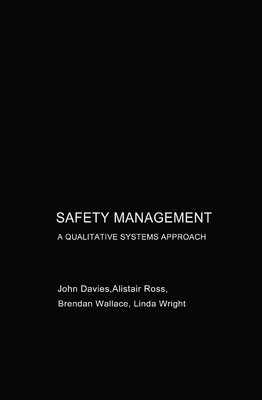
- We will send in 10–14 business days.
- Author: John Davies
- Publisher: Taylor & Francis Group
- ISBN-10: 0415303702
- ISBN-13: 9780415303705
- Format: 15.8 x 23.6 x 2 cm, kieti viršeliai
- Language: English
- SAVE -10% with code: EXTRA
Reviews
Description
Professionals striving for accident reduction must deal with systems in which both technical and human elements play equal and complementary roles. However, many of the existing techniques in ergonomics and risk management concentrate on plant and technical issues and downplay human factors and subjectivity. Safety Management: A Qualitative Systems Approach describes a body of theories and data that addresses safety by drawing on systems theory and applied psychology, stressing the importance of human activity within systems. It explains in detail the central roles of social consensus and reliability and the nature of verbal reports and functional discourse.
This text presents a new approach to safety management, offering a path to both greater safety and to economic savings. It presents a series of methodological tools that have proven to be reliable through extensive use in the rail and nuclear industries. These methods allow organizational and systems failures to be analyzed much more effectively in terms of quantity, precision, and usefulness. The concepts and tools described in this book are particularly valuable for reliability engineers, risk managers, human factors specialists, and safety managers and professionals in safety-critical organizations.EXTRA 10 % discount with code: EXTRA
The promotion ends in 22d.18:50:08
The discount code is valid when purchasing from 10 €. Discounts do not stack.
- Author: John Davies
- Publisher: Taylor & Francis Group
- ISBN-10: 0415303702
- ISBN-13: 9780415303705
- Format: 15.8 x 23.6 x 2 cm, kieti viršeliai
- Language: English English
Professionals striving for accident reduction must deal with systems in which both technical and human elements play equal and complementary roles. However, many of the existing techniques in ergonomics and risk management concentrate on plant and technical issues and downplay human factors and subjectivity. Safety Management: A Qualitative Systems Approach describes a body of theories and data that addresses safety by drawing on systems theory and applied psychology, stressing the importance of human activity within systems. It explains in detail the central roles of social consensus and reliability and the nature of verbal reports and functional discourse.
This text presents a new approach to safety management, offering a path to both greater safety and to economic savings. It presents a series of methodological tools that have proven to be reliable through extensive use in the rail and nuclear industries. These methods allow organizational and systems failures to be analyzed much more effectively in terms of quantity, precision, and usefulness. The concepts and tools described in this book are particularly valuable for reliability engineers, risk managers, human factors specialists, and safety managers and professionals in safety-critical organizations.

Reviews